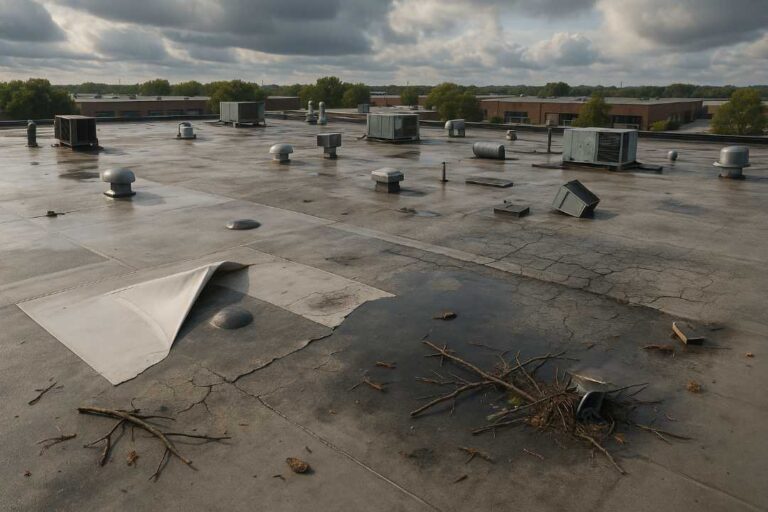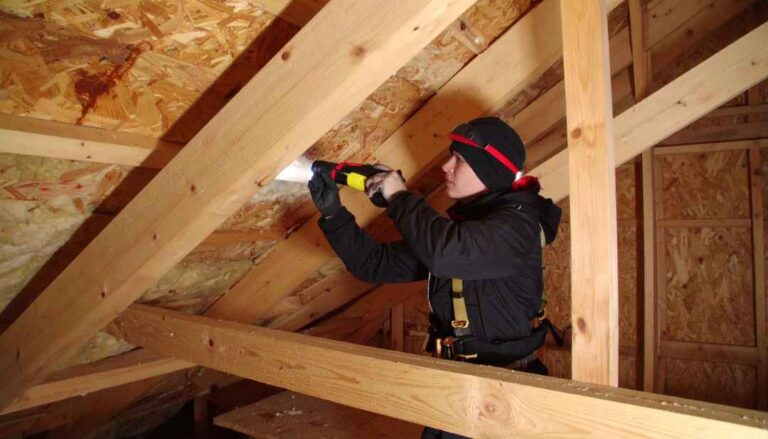The Subtle Nuances of Storm Damage – And Your Insurance Policy
The roar of a Chicagoland storm subsides, leaving behind a trail of debris and, often, a nagging question: “Is my home damaged, and will my insurance cover it?” You might spot a few dents on your gutters, some scuffs on your siding, or even minor granule loss on your roof. While these imperfections are certainly unwelcome, they introduce a critical distinction in the world of property insurance: cosmetic damage versus functional damage.
For homeowners across Illinois, especially in a region prone to severe weather like ours, understanding this difference is paramount. It can be the deciding factor in whether your insurance claim is approved, denied, or only partially covered, ultimately impacting your out-of-pocket costs and your home’s long-term protection. Many homeowners mistakenly believe any visible sign of storm impact automatically warrants full replacement. However, insurance policies are often nuanced, focusing on whether the damage impairs the performance of a component, not just its appearance.
At Seidel Exterior Group, we’ve been helping Chicagoland homeowners navigate storm damage and insurance claims since 1970. We understand the complexities of insurance policies and the frustrations that can arise when expectations don’t align with coverage. This article will clarify the crucial difference between cosmetic and functional damage, explain how insurance companies typically view each, and offer vital tips to help you understand what your policy is likely to cover after a storm in Illinois.
Defining the Terms: Cosmetic vs. Functional Damage
Let’s break down these two critical concepts that govern your insurance claim:
- Functional Damage (Covered!):
- Definition: Damage that impairs the performance, integrity, or lifespan of a building component. It directly reduces the component’s ability to protect your home or maintain its structural soundness.
- Examples:
- Roof: A missing shingle, a crack that extends through the shingle mat, evidence of water leaks into the attic or interior, hail impacts that expose the underlying fiberglass mat, a compromised seal that allows wind uplift, or a roof so damaged it will fail prematurely (e.g., 5-10 years off its expected lifespan).
- Siding: Cracked, warped, or detached panels that allow water penetration; punctures that expose the underlying sheathing; buckling that compromises insulation or creates entry points for pests.
- Gutters: Gutters that are bent, detached, or have holes that prevent them from effectively channeling water away from the foundation.
- Windows: Cracked or broken glass, failed window seals (condensation between panes) that significantly compromise energy efficiency, or frames that are warped and no longer seal properly against water or air.
- Insurance Stance: Generally, homeowner’s insurance policies are designed to cover functional damage. The goal is to restore your home to its pre-loss functional condition.
- Cosmetic Damage (Maybe Not Covered):
- Definition: Damage that affects only the appearance of a building component but does not compromise its performance, integrity, or expected lifespan. The component still performs its intended function.
- Examples:
- Roof: Minor hail “dings” on asphalt shingles that only remove superficial granules but do not expose the mat or reduce the shingle’s overall lifespan, or minor scuffs that don’t compromise the shingle’s integrity.
- Siding: Subtle hail dimples on vinyl siding that don’t penetrate the panel or affect its water-shedding capabilities; minor scuffs or scratches that are purely aesthetic.
- Gutters: Small, superficial dents or scratches that do not impede water flow.
- Windows: Minor scratches on the glass surface (not between panes) or slight scuffs on the frame that don’t affect operation or sealing.
- Insurance Stance: This is where it gets tricky. Many standard homeowner’s policies do not cover purely cosmetic damage, especially for roofs. Some newer policies even include specific “cosmetic hail endorsements” or riders that explicitly exclude cosmetic damage to roofs and siding, or only cover it if you pay an additional premium. Always check your specific policy language.
The “Grey Area” and Why It’s Crucial to Have an Expert Assessment
The line between cosmetic and functional damage isn’t always black and white, especially for roof and siding materials after hail. This “grey area” is precisely why a professional assessment from a reputable contractor like Seidel Exterior Group is invaluable.
- Asphalt Shingles: A few missing granules might be cosmetic wear, but a pattern of hail impacts causing widespread granule loss that exposes the asphalt mat (accelerating UV degradation) or creates micro-fractures in the mat is functional damage, even if it’s not immediately leaking. An insurance adjuster might initially categorize it as cosmetic if they don’t look closely or are not trained to spot subtle structural integrity issues.
- Metal Roofs: Small, shallow dents might be considered cosmetic, but if the hail dents are numerous, deep, or compromise the panel’s coating (leading to rust), or affect the structural integrity of the standing seams, they could be deemed functional.
- Vinyl Siding: A few minor hail dimples might be cosmetic. But if the dimples are numerous, cause stress cracks, or compromise the panel’s ability to interlock or shed water effectively, it becomes functional. Extreme temperature changes in Illinois can make brittle vinyl more susceptible to cracking from minor impacts that would otherwise be cosmetic in milder climates.
- Windows: A small scratch on the glass surface is cosmetic. But if the hail causes a failed seal (condensation between panes), even without a visible crack, it compromises the window’s energy efficiency and eventually its integrity, making it functional damage.
An experienced storm damage contractor knows the nuances of what constitutes functional damage and how to effectively communicate this to your insurance adjuster.
What to Do: Navigating Your Insurance Claim with Seidel Exterior Group
Here’s a strategic approach for Chicagoland homeowners to manage their storm damage claim, keeping the cosmetic vs. functional distinction in mind:
- Prioritize Safety & Document Initial Damage:
- Immediately after the storm, ensure your property is safe.
- Take extensive photos and videos of all visible damage, even if you suspect it’s cosmetic. Capture wide shots and close-ups. This is your baseline evidence.
- Call Seidel Exterior Group for a FREE, Comprehensive Inspection:
- Before you call your insurance company, or right after you notify them, schedule a professional inspection with us.
- Our certified storm damage experts are trained to identify both cosmetic and functional damage on roofs, siding, and gutters, especially the subtle and hidden types. We use specialized techniques to assess the integrity of materials that may appear superficially fine.
- We will provide you with a detailed, professional report outlining all damages found, with clear explanations of whether they are functional (and why) or cosmetic.
- Review Your Insurance Policy (Especially for Hail/Wind Endorsements):
- Familiarize yourself with your policy’s specific language regarding hail and wind damage. Look for clauses related to “cosmetic damage exclusion” or “actual cash value (ACV)” versus “replacement cost value (RCV)” for specific components.
- If you’re unsure, ask your insurance agent for clarification.
- Notify Your Insurance Company & Request an Adjuster Visit:
- Once you have our professional assessment, call your insurance provider to open a claim.
- Inform them that you’ve had a professional inspection done and have detailed documentation.
- Request that your adjuster meet with a representative from Seidel Exterior Group on-site.
- Let Seidel Exterior Group Meet with Your Adjuster:
- This is a critical advantage. Our project managers have extensive experience working with insurance adjusters. We can walk them through our findings, point out the functional damage they might miss, explain how seemingly minor impacts affect the material’s long-term integrity, and articulate why certain repairs or replacements are necessary under the policy. We speak their language.
- This helps ensure all functional damage is properly identified and included in the claim.
- Compare Estimates and Advocate for Full Coverage:
- Your insurance adjuster will provide their estimate. Compare it meticulously with Seidel Exterior Group’s estimate.
- If the adjuster’s estimate is lower, or if it categorizes functional damage as cosmetic, our team can help you prepare a supplemental claim or negotiate with the insurance company. We will provide additional documentation and justification to ensure you receive a fair and complete settlement for all covered damages.
- We aim to get you the “Replacement Cost Value” (RCV) for your functionally damaged components, which typically covers the cost of new materials and installation, without depreciation.
Why Seidel Exterior Group is Your Best Ally in Chicagoland
Navigating the complexities of storm damage and insurance claims, especially when dealing with the cosmetic vs. functional distinction, can be overwhelming. This is precisely why partnering with a reputable, experienced local contractor like Seidel Exterior Group is invaluable:
- Expert Damage Assessment: Our certified professionals are trained to identify subtle and hidden functional damage that untrained eyes might miss, crucial for a successful claim.
- Insurance Claim Advocacy: We have decades of experience working with all major insurance companies operating in Illinois. We understand their processes, documentation requirements, and how to effectively communicate the severity and functional impact of damage to secure fair compensation.
- Accurate & Transparent Estimates: Our detailed estimates clearly outline all necessary repairs and their associated costs, providing a solid basis for your insurance claim.
- Quality Restoration: We ensure all repairs are performed to the highest standards, using durable materials that protect your home effectively for the long term.
- Peace of Mind: We take the stress out of the process, allowing you to focus on your family while we handle the complexities of your claim and restoration.
Don’t Let Nuance Cost You – Understand Your Coverage
The distinction between cosmetic and functional damage is a critical one for Chicagoland homeowners facing storm damage. It’s the difference between minor aesthetic imperfections and a compromised home susceptible to leaks, energy loss, and premature failure. Understanding your insurance policy and having an expert on your side is essential to ensure your home receives the complete protection it deserves.
Don’t assume minor surface damage is just “cosmetic.” It could be a subtle sign of functional compromise that warrants a full insurance claim and professional repair.
If your Chicagoland home has weathered a recent storm, and you’re unsure about the extent or type of damage, don’t leave it to chance. Contact Seidel Exterior Group today for a free, comprehensive inspection. Let our experts provide a clear diagnosis and guide you through the insurance process to ensure your home is fully and properly restored.



